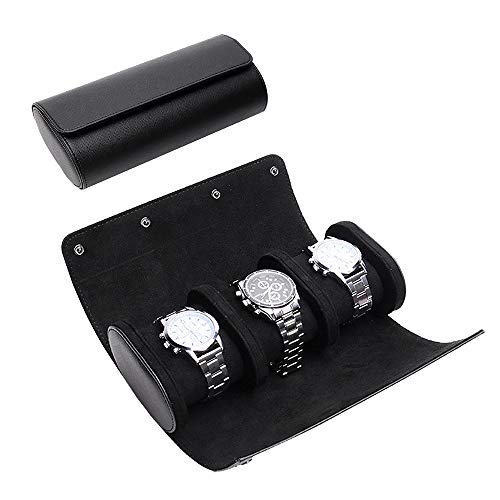Are you a pilot or aviation enthusiast looking to boost your accuracy and efficiency during calculations? This step-by-step guide will teach you how to make the most out of the slide rule on your pilot watch. By following these instructions, you’ll be able to easily and effectively use this feature for all your flight calculations. Get ready to take your flying skills to new heights!
Top-rated pilot watches
Check your watch's slide rule functionality
To check if your watch has a slide rule functionality, follow these steps:
- Refer to the user manual: Start by consulting the user manual that came with your watch. Look for any mention of a slide rule or calculations in the manual. It should provide clear instructions on how to access and use the slide rule feature.
- Inspect the watch face: Examine the watch face and look for any additional markings or scales besides the standard timekeeping features. Slide rule functionality is often indicated by circular or logarithmic scales surrounding the dial. These scales may include units of measurement, such as kilometers, nautical miles, or fuel consumption.
- Contact the manufacturer: If you are still unsure about the availability or location of the slide rule on your specific watch model, reach out to the manufacturer for clarification. They will be able to provide you with accurate information and guidance.
Remember, not all pilot watches have a slide rule feature, so it is essential to verify its presence before attempting any calculations.
Familiarize yourself with the markings and scales
- Examine your watch and focus on the slide rule component. Take note of the various markings and scales present.
- Identify the logarithmic scales, which are fundamental for performing calculations. These scales are typically depicted as lines evenly spaced apart, each representing a specific value on a logarithmic scale.
- Familiarize yourself with the conversion factors provided on the slide rule. These factors allow you to quickly convert from one unit of measurement to another, saving you time and effort during calculations.
- Pay close attention to the reference points displayed on the markings. These reference points aid in accurately positioning your calculations on the slide rule.
- Take note of the units of measurement indicated on the markings and the corresponding scales. Becoming familiar with these scales will help you ensure correct conversions and calculations.
- Practice using the markings and scales on your watch’s slide rule to gain confidence and proficiency. Regular use will allow you to swiftly perform calculations and make the most of this handy tool.
- Keep in mind that understanding the markings and scales on your watch’s slide rule is essential for accurate calculations. Spend adequate time studying and practicing to become adept at utilizing this feature effectively.
Remember to carefully examine the markings, pay attention to the scales, and note the reference points and units of measurement. Regular practice will improve your understanding and proficiency with the slide rule on your watch.
Understand the basic operations
- Multiply: Align the numbers on the C and D scales corresponding to the two factors you want to multiply. Locate the product on the D scale directly opposite the C scale. Voila! You’ve successfully multiplied two numbers using the slide rule.
- Divide: Position the divisor on the C scale against the dividend on the D scale. Read the quotient on the D scale, right across from the C scale. Hooray! You’ve divided numbers with the slide rule.
- Calculate Square Root: Place the number whose square root you need on the D scale directly under the hairline. Observe the corresponding value on the C scale. That’s it! You’ve obtained the square root using the slide rule.
- Make Conversions: If you want to convert a measurement from one unit to another, locate the corresponding numbers on the C and D scales. Align these numbers, and read the equivalent value on the D scale aligned with the desired unit on the C scale. Fantastic! You’ve converted units using the slide rule.
Remember, these are just the basic operations you can perform with the slide rule. Consult the user manual for detailed instructions and additional functionalities available for your specific slide rule. Happy sliding!
Perform multiplication and division calculations
Perform multiplication calculations:
- Align the first number on the outer scale with the second number on the inner scale.
- Locate the index marker on the outer scale to find the result.
Perform division calculations:
- Align the dividend on the outer scale with the divisor on the inner scale.
- Locate the index marker on the inner scale to find the result.
Calculate square roots
Align the number on the scale with the square root symbol (√) on the slide rule. Move the slide rule until the index marker on the scale indicates the result of the square root calculation. Remember that in the case of pilot watches, you might need to make additional adjustments or follow specific steps to calculate square roots accurately. Make sure to consult the watch’s manual or contact the manufacturer for further instructions if needed.
Perform conversions
To perform unit conversions using the slide rule on your pilot watch, follow these simple steps:
- Locate the appropriate conversion factor: Find the scale on your watch that corresponds to the unit you want to convert. For example, if you want to convert distance from kilometers to miles, find the kilometer-to-mile conversion scale.
- Align the conversion factor with the number to convert: Once you have located the correct scale, slide it until the conversion factor aligns with the value you wish to convert. For instance, if you want to convert 10 kilometers to miles, align the conversion factor on the kilometer-to-mile scale with the number 10.
- Read the converted value: After aligning the scales, look for the index marker on the slide rule. The converted value will be indicated by the index marker on the corresponding scale. In our example, the converted value in miles will be shown by the index marker on the mile scale.
Using the slide rule on your pilot watch for unit conversions becomes a straightforward process by following these steps. Quickly find the appropriate conversion factor, align it correctly, and read the converted value using the index marker.
Practice and refine your skills
- Start with Simple Calculations: Begin by familiarizing yourself with the different scales and markings on the slide rule of your pilot watch. Practice basic calculations such as addition, subtraction, multiplication, and division using the slide rule. For example, calculate the sum of two numbers by aligning the leftmost mark on the C scale with the first number on the D scale, and then read the result on the C scale aligned with the second number on the D scale.
- Gradually Increase Complexity: Once you feel comfortable with basic calculations, challenge yourself by moving on to more complex ones. For instance, calculate square roots by aligning the leftmost mark on the C scale with the number you want to find the square root of on the D scale. Read the result directly from the A scale. Similarly, logarithms can be determined by aligning the leftmost mark on the C scale with the given number on the D scale and then reading the result on the appropriate scale.
- Regular Practice to Enhance Proficiency: To become more proficient in using the slide rule on your pilot watch, make it a habit to practice regularly. Set aside dedicated time each day or week to work on calculations using the slide rule. This consistent practice will help solidify your understanding of the different scales and improve your speed and accuracy in utilizing this valuable tool.
Remember, practice makes perfect. Over time, as you practice and refine your skills with the slide rule on your pilot watch, you will not only become more comfortable with its usage but also increase your efficiency in performing calculations during flight operations.
Final Thoughts
In conclusion, mastering the use of the slide rule on your pilot watch is a skill that can greatly enhance your capabilities as a pilot. With practice, you can confidently rely on this tool for accurate calculations, leading to safer and more efficient flights. So go ahead, embrace the power of the slide rule and take your navigational skills to new heights.
Calculating with Precision
Using Your Aviation Watch: Calculating Time
Using the Pilot Watch
- Adjust the time and date: Set the correct time and date on your pilot watch by pulling out the crown (the little knob on the side) and rotating it clockwise or counterclockwise until the desired time or date is displayed
- Familiarize yourself with the features: Take the time to understand the various features of your pilot watch, such as chronograph functions (stopwatch), tachymeter (used to measure speed), and additional time zones. Refer to the watch’s manual for detailed instructions specific to your model
- Understand the bezel: Many pilot watches have a rotating bezel that can be used to track elapsed time or to calculate fuel consumption. It is typically marked with indices or numbers, so take some time to familiarize yourself with how to use it effectively
- Learn how to use the slide rule: Some pilot watches have a slide rule, which is a mechanical calculator used for various calculations, like fuel consumption, ground speed, and distance. Make sure you understand how to operate the slide rule by referring to the watch’s manual or searching for a tutorial online
- Practice using the chronograph: The chronograph function can be useful for timing intervals or events. Experiment with starting, stopping, and resetting the chronograph hands to get comfortable with its operation. This feature can be handy when calculating flight durations or other time-related tasks
- Remember, it’s important to consult the manual that comes with your specific pilot watch model, as the functionalities and operation may vary among different brands and designs














![Citizen BY1001-66E [ATTESA (attesa) Light-Powered eco-Drive Radio Clock Direct Flight Moon Phase] Watch Japan Import July 2023 Model](https://m.media-amazon.com/images/I/51dYeIjvuEL.jpg)
![New Russian Aviator Pilot Army Military Sports Quartz Mens Wrist Watch Dual Time Black Leather Band [Black]](https://m.media-amazon.com/images/I/51-Dv1RfNjL.jpg)

